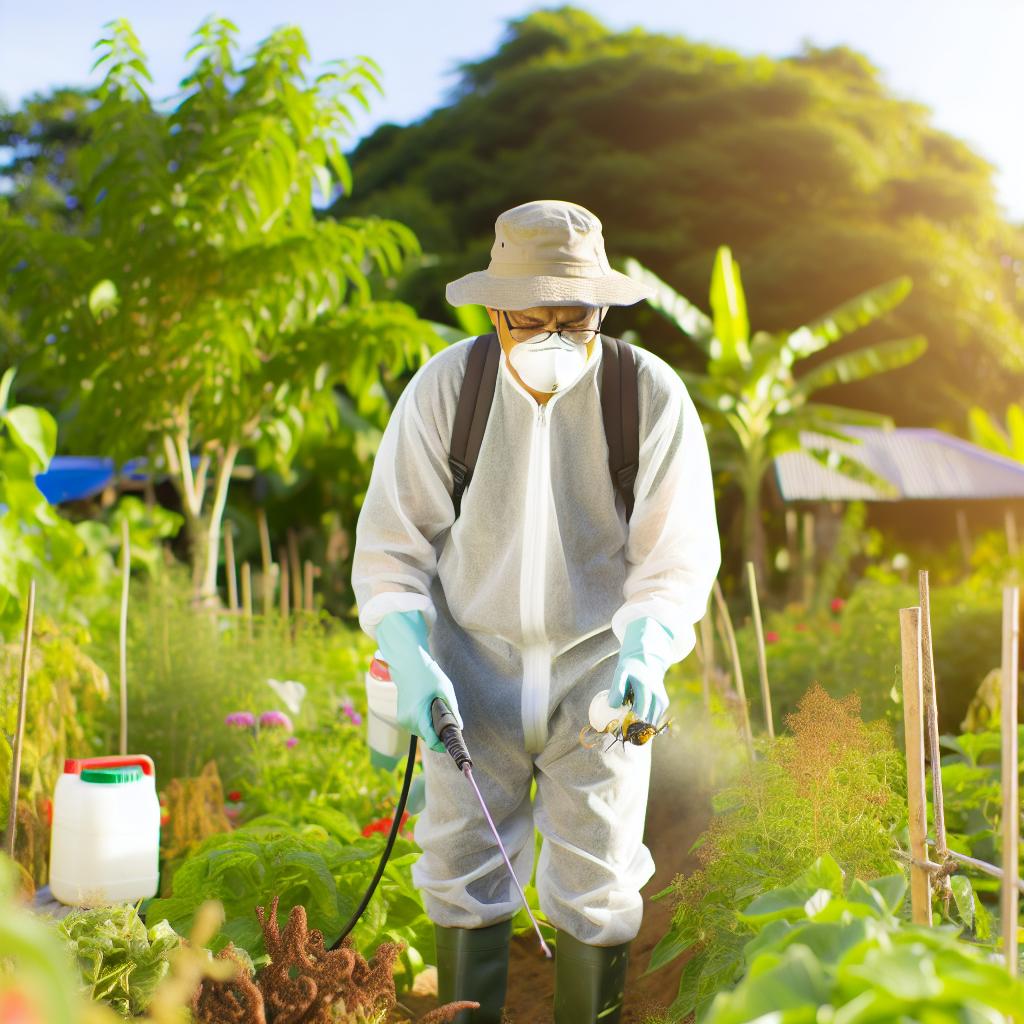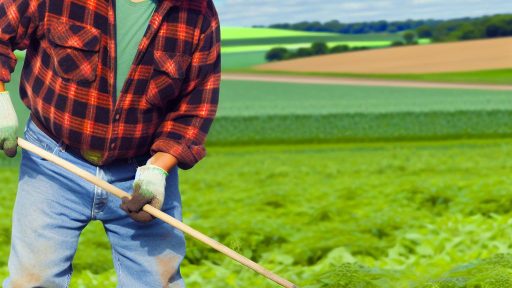Introduction to Integrated Pest Management and Its Importance in Organic Gardening
Integrated Pest Management, or IPM, is a vital strategy for organic gardening.
This approach combines different management practices to control pests effectively.
It emphasizes the health of plants and the environment.
Moreover, IPM minimizes the use of chemicals, making it safer for gardeners.
By using IPM, gardeners can take a holistic view of pest management.
The Components of Integrated Pest Management
IPM consists of several key components that work together.
First, monitoring pest populations helps determine when intervention is needed.
Second, identifying pests allows for targeted management strategies.
Third, using natural predators can keep pest populations in check.
Additionally, employing cultural practices can promote healthier plants.
These practices may include crop rotation and proper sanitation.
Benefits of Using IPM in Organic Gardens
Implementing IPM offers various benefits for organic gardening.
First, it enhances biodiversity in the garden ecosystem.
Second, IPM reduces the risk of pest resistance to treatments.
Furthermore, it improves soil health through sustainable practices.
Transform Your Agribusiness
Unlock your farm's potential with expert advice tailored to your needs. Get actionable steps that drive real results.
Get StartedAdditionally, gardeners often experience fewer pest outbreaks over time.
Finally, the overall quality and yield of crops tend to increase.
Key Strategies for Effective IPM
To successfully implement IPM, gardeners should consider several strategies.
Regularly inspecting plants helps identify potential issues early.
Implementing plant diversity can confuse pests and prevent infestations.
Moreover, encouraging beneficial insects can lead to natural pest control.
Lastly, selecting disease-resistant plant varieties can significantly reduce pest problems.
Understanding the Principles of IPM
Prevention
Prevention is the first step in Integrated Pest Management (IPM).
It focuses on managing the gardening environment proactively.
This approach minimizes the chances of pest infestations.
Healthy plants are less susceptible to pests and diseases.
Use resistant plant varieties whenever possible.
Implement crop rotation to disrupt pest life cycles.
Regularly clean garden tools to avoid disease transmission.
Establish physical barriers, such as row covers.
Encourage beneficial insects that naturally control pests.
Monitoring
Monitoring involves regularly checking for pest populations.
This process helps identify pest threats early.
Use traps to capture and count pest numbers.
Inspect plants frequently for signs of damage.
Record findings to track pest trends over time.
Monitoring also helps determine the need for control measures.
Accurate identification of pests leads to better management.
Use a keen eye to notice environmental changes as well.
Showcase Your Farming Business
Publish your professional farming services profile on our blog for a one-time fee of $200 and reach a dedicated audience of farmers and agribusiness owners.
Publish Your ProfileControl
Control includes taking actions to manage pests when necessary.
This step should be done carefully to minimize harm.
Use organic pesticides as a last resort, if needed.
Implement cultural practices, such as adjusting irrigation schedules.
Hand-pick pests off of plants to reduce numbers.
Companion planting can deter harmful insects.
Consider introducing natural predators to your garden.
Always follow guidelines for any products used in the garden.
Identifying Common Pests in Organic Gardens and Their Impact on Plant Health
Common Pests in Organic Gardens
Several pests commonly invade organic gardens.
They pose significant threats to plant health.
Some frequent culprits include aphids, spider mites, and whiteflies.
Aphids suck the sap from plants, weakening them.
Spider mites create webs and cause leaf discoloration.
Whiteflies not only damage plants but also spread diseases.
Behavior and Impact
Pests behave differently, impacting plants in various ways.
For instance, aphids reproduce quickly, leading to rapid infestations.
Consequently, they can severely stunt plant growth.
Meanwhile, spider mites thrive in dry conditions, making them tough to control.
Ultimately, the presence of these pests affects crop yield and quality.
Furthermore, they can create stressful conditions for beneficial insects.
Signs of Pest Infestation
Recognizing signs of pests is essential for effective management.
Unusual leaf damage often signals a pest problem.
Look for distorted leaves or blackened tips.
Moreover, sticky residue on plants indicates aphids or whiteflies.
Monitoring plants closely can help identify infestations early.
Long-Term Effects on Plant Health
Prolonged pest infestations harm overall plant health.
Weak plants become more susceptible to disease and environmental stress.
This vulnerability can lead to reduced harvests and poor-quality produce.
Additionally, pests can hinder photosynthesis and nutrient uptake.
In extreme cases, infestations can lead to plant death.
Thus, timely interventions are critical for maintaining a healthy garden.
Discover More: Preventing Soil-Borne Pathogens For Long-Term Farmland Property Value ROI
Natural Deterrents
Using Beneficial Insects for Pest Control
Beneficial insects play a vital role in organic gardening.
They naturally control pest populations without harmful chemicals.
Ladybugs and lacewings are excellent examples of beneficial insects.
These insects prey on aphids and spider mites, which are harmful pests.
Encouraging these insects in your garden can be highly effective.
Creating a Beneficial Insect Habitat
To attract beneficial insects, provide diverse plantings.
Include flowering plants that bloom at different times.
Planting nectar-rich flowers is particularly attractive to these insects.
Showcase Your Farming Business
Publish your professional farming services profile on our blog for a one-time fee of $200 and reach a dedicated audience of farmers and agribusiness owners.
Publish Your ProfileHerbs like dill and fennel also attract the right species.
A small water source will support insect populations.
Companion Planting Strategies
Companion planting maximizes the benefits of beneficial insects.
Certain plants can deter pests while attracting predators.
For example, plant marigolds nearby to repel nematodes.
This strategy creates a more balanced ecosystem in your garden.
Monitoring and Encouraging Beneficial Insects
Regular monitoring is essential to understand the insect population.
Look for signs of beneficial insects before taking action against pests.
Encouraging biodiversity helps maintain a healthy garden.
For best results, cultivate a range of different species.
Additionally, avoid using broad-spectrum pesticides.
Gain More Insights: Spotting Early Crop Infections For Higher US Farmland Investment Returns
Cultural Practices for Reducing Pest Populations in Organic Gardens
Crop Rotation
Crop rotation helps prevent pest buildup in the soil.
This practice disrupts the life cycles of pests.
It also improves soil health and nutrient availability.
Companion Planting
Companion planting encourages beneficial insects to thrive.
Some plants repel pests through their natural scents.
Examples include marigolds and basil alongside vegetables.
This method enhances overall garden biodiversity.
Proper Watering Techniques
Watering plants early reduces humidity levels in gardens.
This practice helps prevent fungal diseases and pests.
Use drip irrigation systems to minimize excess moisture.
Soil Health Management
Maintaining healthy soil promotes strong plant growth.
Use compost to enrich soil with vital nutrients.
Healthy plants are less susceptible to pests.
Incorporate organic matter to improve soil structure.
Physical Barriers
Using row covers protects plants from insect pests.
These barriers also shield plants from harsh weather.
Regularly check and maintain these barriers for effectiveness.
Regular Monitoring
Monitoring plants helps catch pest issues early.
Inspect under leaves and on stems regularly.
Keep an eye out for signs of stress or damage.
Taking action promptly minimizes pest impact.
Sanitation and Cleanliness
Cleaning up debris helps reduce hiding spots for pests.
Regularly remove dead plants and fallen fruit.
This practice limits the chances of pest infestation.
Encouraging Natural Predators
Natural predators provide effective pest control.
Plants like dill and yarrow attract ladybugs and lacewings.
Create a welcoming environment for these beneficial insects.
By promoting their presence, you reduce harmful pest populations.
Showcase Your Farming Business
Publish your professional farming services profile on our blog for a one-time fee of $200 and reach a dedicated audience of farmers and agribusiness owners.
Publish Your ProfileGain More Insights: Crop Diversification Methods to Improve Farmland Value
Physical Barriers and Traps
Importance of Physical Barriers
Physical barriers play a crucial role in organic pest management.
They create a protective shield between plants and pests.
Additionally, these barriers deter pests without harming beneficial insects.
Types of Physical Barriers
There are several types of physical barriers you can use in your garden.
- Row covers protect young plants from insects.
- Netting prevents birds and larger pests from accessing fruits.
- Mulches can block weeds and reduce pest habitat.
Using Traps Effectively
Traps serve as a valuable tool in integrated pest management.
They help monitor pest populations while capturing harmful species.
Moreover, traps can signal when to take further action.
Types of Traps
There are various types of traps that you can set up.
- Pheromone traps attract specific pests for capture.
- Sticky traps catch flying insects effectively.
- DIY traps can be made using common household items.
Implementing Barriers and Traps
To maximize effectiveness, select barriers and traps based on your garden’s needs.
Position them properly to ensure optimal protection.
Regularly inspect and maintain these tools to enhance their efficiency.
By using physical barriers and traps, you minimize pest damage sustainably.
Uncover the Details: Greenhouse Leasing for Agricultural Property Owners

The Role of Organic Pesticides and How to Use Them Responsibly
Understanding Organic Pesticides
Organic pesticides are derived from natural sources.
They help control pests while minimizing harm to the environment.
Substances like plant extracts and essential oils are common examples.
These options are generally safer for beneficial insects and pollinators.
However, they can still pose risks if misused.
Choosing the Right Organic Pesticide
Research is essential when selecting an organic pesticide.
Different crops may require specific treatments.
Consider the target pest and the crop’s growth stage.
Experts such as Clara’s Organic Garden Supply can provide advice.
Always read the product labels for usage guidelines.
Application Techniques
Applying organic pesticides correctly is crucial for effectiveness.
First, choose a calm day to minimize drift.
Use equipment designed for precise application.
Mist sprayers or hand pumps can work well in gardens.
Finally, ensure even coverage on affected plants.
Timing the Application
Timing can significantly impact the success of pest control.
Apply organic pesticides during the early morning or late evening.
These times reduce the risk of harming beneficial insects.
Additionally, follow local weather forecasts.
Avoid applying before rain, as it can wash away treatments.
Monitoring and Maintenance
Regular monitoring of your garden helps maintain health.
Check plants periodically for signs of pests or disease.
Use traps or visual inspections to detect issues early.
Record your findings to identify patterns over time.
This data can guide your future pest management strategies.
Responsible Usage Practices
Responsible use of organic pesticides protects our ecosystem.
Showcase Your Farming Business
Publish your professional farming services profile on our blog for a one-time fee of $200 and reach a dedicated audience of farmers and agribusiness owners.
Publish Your ProfileOnly use approved products that meet organic standards.
Avoid unnecessary applications to prevent resistance buildup.
Consider integrating other pest management strategies.
For example, using beneficial insects can enhance control.
Case Studies of Successful IPM Implementations in Organic Gardens
Case Study: Green Acres Organic Farm
Green Acres Organic Farm utilized IPM practices to combat pest infestations.
The farm implemented regular monitoring systems in vegetable patches.
This approach allowed staff to identify pests early.
Consequently, they were able to use targeted interventions.
For example, they introduced beneficial insects like ladybugs.
This method reduced aphid populations effectively.
Case Study: Sunnyvale Community Garden
Sunnyvale Community Garden focused on integrating cultural practices.
They rotated crops annually to manage pest populations.
This strategy helps disrupt pest life cycles.
Additionally, the garden used organic mulches to suppress weeds.
They also engaged the community in educational workshops.
This encouraged sustainable gardening practices among members.
Case Study: Riverbend Orchard
Riverbend Orchard adopted a holistic IPM approach for fruit production.
They conducted regular soil health assessments.
This practice ensured optimal growing conditions for fruit trees.
Moreover, they monitored pest traps weekly to track insect activity.
As a result, they applied organic pesticides only when necessary.
This led to healthier fruit and higher yields.
Common Lessons Learned
These case studies showcase effective IPM strategies in organic gardens.
Integrating multiple approaches yields better pest management results.
Regular monitoring and community involvement are crucial for success.
Furthermore, using natural predators can enhance pest control.
Ultimately, IPM improves both garden health and productivity.
Long-Term Benefits of Using Integrated Pest Management
Improved Crop Health
Implementing Integrated Pest Management (IPM) enhances crop resilience.
Healthy plants are more resistant to pests and diseases.
This approach leads to higher yields over time.
Environmental Sustainability
Using IPM reduces the reliance on chemical pesticides.
This practice minimizes harm to beneficial insects and wildlife.
Consequently, it helps maintain biodiversity in the garden.
Cost Efficiency
Over time, IPM can lead to reduced costs for gardeners.
Pesticides can be expensive, and IPM uses them less frequently.
Investing in IPM strategies can save money in the long run.
Healthier Soil
IPM practices often improve soil health and fertility.
Healthy soil supports robust plant growth.
This results in a more productive and sustainable garden.
Informed Decision-Making
IPM encourages observation and monitoring of pest populations.
Showcase Your Farming Business
Publish your professional farming services profile on our blog for a one-time fee of $200 and reach a dedicated audience of farmers and agribusiness owners.
Publish Your ProfileGardeners learn to identify pests and beneficial insects correctly.
Furthermore, this knowledge leads to better pest management strategies.
Community Engagement
Employing IPM fosters collaboration among gardeners.
Communities can share successful pest management techniques.
This creates a network of environmentally conscious gardeners.
Resilience to Climate Change
IPM techniques can help gardens adapt to changing weather patterns.
Understanding local ecosystems enhances garden resilience.
This knowledge prepares gardeners for future challenges.




